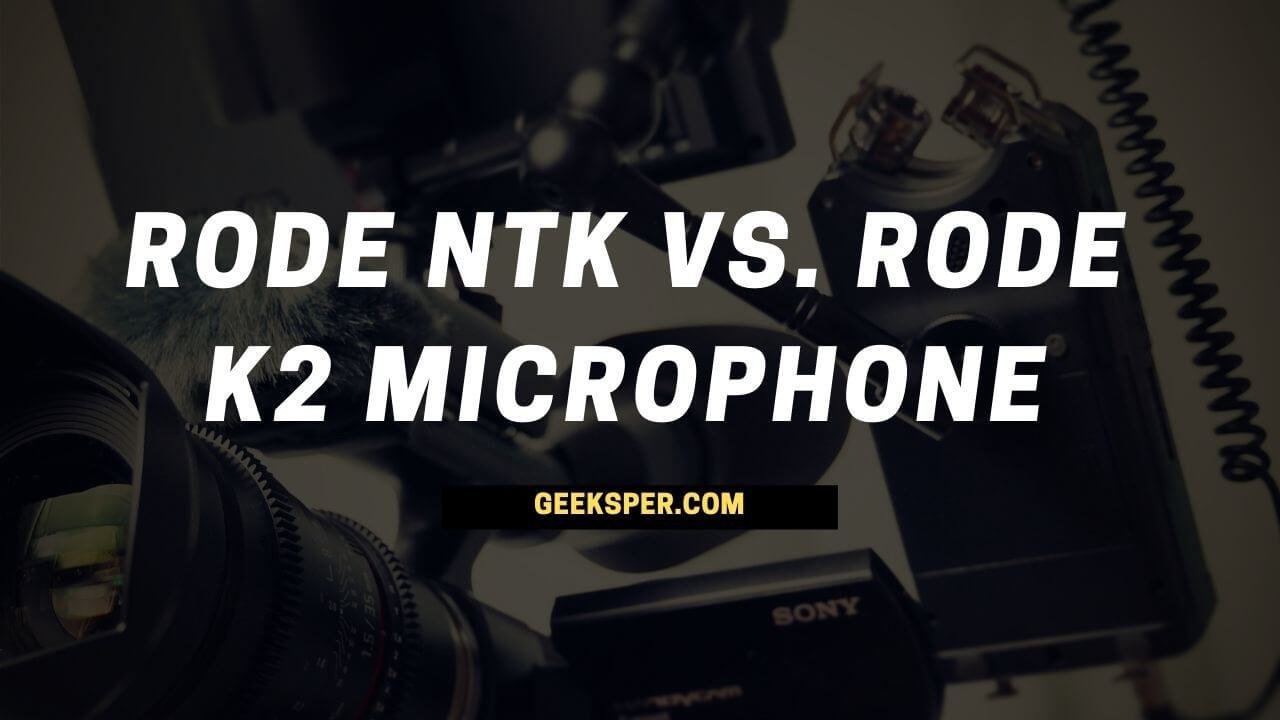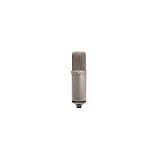Rode NTK vs. K2 microphone is a question that many people are asking themselves these days. They are both high-end products with a lot of great features, but which one is better?
In this article, we will compare the two microphones and find out which one comes on top in terms of performance, design, and other factors. Let’s start by comparing their most basic features to see what sets them apart from each other!
Rode NTK Microphone
Rode NTK is the premium tube condenser microphone with a large 1-inch capsule for optimal sound quality. Class “A” valve circuitry and an ultra-low noise design help to ensure that you get the best possible audio quality, whatever your application. The NTK is perfect for recording vocals, musical instruments, or any other source of sound where natural detail and clarity are important.
- Large 1 inch capsule with gold plated diaphragm
- Class A valve circuitry
- Ultra low noise; Frequency Range 20Hz - 20kHz
- Wide dynamic range
The Rode NTK tube condenser microphone features a custom-designed large-diaphragm capsule with gold plated contacts which provides superior transient response and wide dynamic range. An internal impedance converter guarantees a uniform frequency response, enhanced transient detail, and low self-noise.
Rode NTK microphone has the frequency response of 20Hz – 20KHz and the max SPL of 158dB. It can handle very high pressure sounds like drums, guitars, etc. without any affect on the sound quality.
The NTK microphone is supplied with an external power supply which also allows remote powering of the mic from up to 100 meters away using standard RG59 cable (included). The Rode NTK comes complete in a wooden presentation case with accessories including a pop shield, connector cables, shock mount, and windscreen.
Technical Specifications of Rode NTK Microphone
| Microphone | Rode NTK |
| Type | Large-diaphragm Tube Condenser |
| Polar Pattern | Cardioid |
| Frequency Response | 20Hz-20kHz |
| Max SPL | 158dB |
| Output Impedance | 200 ohms |
| Signal to Noise Ratio | 82dB (A-weighted) |
| Self Noise | 12dB (A-weighted) |
| Connector | XLR |
| Included Accessories | Stand Mount, Carry Case |
| Weight | 1.68 lbs |
| Buy On | Amazon |
Pros and Cons of Rode NTK Microphone
Who should buy Rode NTK Microphone?
You can buy Rode NTK Microphone, if:
-You are looking for an all-purpose, general use microphone that is perfect for recording instruments and vocals with any kind of instrument.
-The Rode NTK mic offers a quieter design than the K series microphones (e.g., Rode NTK vs Shure SM58). This would be great if you want to record in places where there are people around like at home or your studio, so as not to annoy them while you’re recording.
Also check out: Rode NT1A vs. NT2A Microphone Comparison
Rode K2 Microphone
The RØDE K2 is a large-diaphragm, dual-pattern valve microphone that combines the classic sound of a large diaphragm with the versatility of multiple polar patterns.
- Large 1" capsule with gold sputtered diaphragm and internal shock mounting
- Ultra low noise; Wide dynamic range
- Class ‘A’ valve circuitry
- Hand-selected and graded 6922 twin-triode valve
The K2’s 1-inch capsule features gold-sputtered diaphragms and internal shock mounting to ensure low self-noise and high sensitivity. Class ‘A’ valve circuitry ensures that the signal path is as quiet as possible, while still maintaining even frequency response.
Rode K2 microphone has the frequency response of 20Hz to 20KHz and it has the max SPL of 162dB. The max SPL is super high which makes this microphone super premium. The features that you are getting in this microphone are really impressive.
The K2 has been designed for ease of use and can be switched between cardioid and omnidirectional polar patterns simply by rotating the microphone head.
The K-Series microphones are perfect for a wide variety of recording situations, from live performance to studio applications, as well as voice-over and podcasting.
Technical Specifications of Rode K2 Microphone
| Microphone | Rode K2 |
| Type | Large-diaphragm Tube Condenser |
| Polar Pattern | Cardioid, Omni, Figure-8 |
| Frequency Response | 20Hz-20kHz |
| Max SPL | 162dB |
| Output Impedance | 200 ohms |
| Signal to Noise Ratio | 81dB (A-weighted) |
| Self Noise | 10dB (A-weighted) |
| Connector | XLR |
| Included Accessories | Stand Mount, Carry Case |
| Weight | 1.8 lbs |
| Buy On | Amazon |
Pros and Cons of Rode K2 Microphone
Who should use Rode K2 Microphone?
-The Rode K-Series microphones are perfect for a wide variety of recording situations, from live performance to studio applications, as well as voice-over and podcasting.
Also check out: Shure SM7B vs Rode NT1A Microphone Comparison: Head to Head Microphone Comparison
Rode NTK vs. Rode K2 Microphone
The Rode K2 microphone is higher performing and more expensive than the Rode NTK. If you want to spend a bit of cash, then the Rode K2 microphone is what you should get. However, if money’s tight, or you’re not sure about your needs yet – go for an NTK. It does everything most people need it to do and is much cheaper!
The primary difference between these two microphones is in their frequency response. The NTK has a flat frequency response while the Rode K2 provides enhanced low end which can come in handy when recording vocals. Something else that might be important would be how easy each microphone will allow access to certain frequencies during nonlinear editing sessions. The NTK is the better choice if you’re on a budget.
The Rode K-Series microphones are more expensive and they require phantom power to operate, but their sound quality is much higher than that of the Rode NTK microphone. If you happen to have an external preamp for your microphone or can afford it – then this might be a good match for your needs!
If you want one studio tool with all sorts of applications, get either an NTK or a Rode K2 mic. They will both work wonders in many different settings!
Conclusion: Which One You Should Buy?
I have shared my thoughts on the Rode NTK vs Rode K2 microphone debate. Now, it’s your turn to tell us which one you think is better and why! What are your thoughts? Share them with us in the comment section below.
If you want my personal recommendation then I will suggest you to go with Rode K2 microphone as it is really premium microphone that will fit best for you however you want to use.
You can check other articles which you might be interested in:
Neewer NW 700 vs. Neewer NW 800: Which is the Right Microphone for You?
Sennheiser e935 vs e945 Microphone Comparison Review: Which One You Should Pick?
Sennheiser e906 vs e609 Microphone Comparison
Rode NT1A vs. NT2A Microphone Comparison
Shure SM7B vs Rode NT1A Microphone Comparison: Head to Head Microphone Comparison


